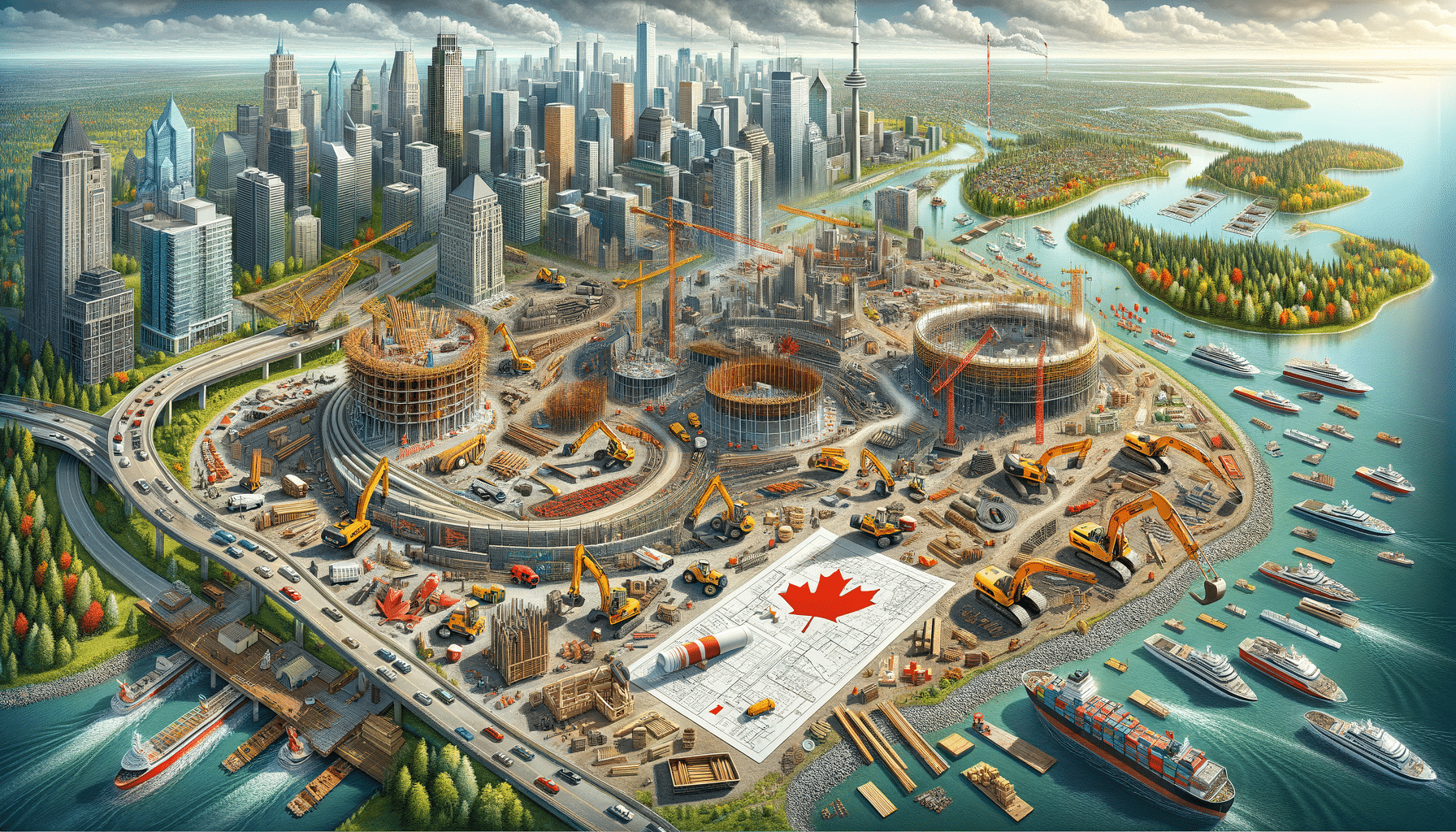
Construction Work in Canada: General Overview
Introduction to Construction Work in Canada
Construction work in Canada is a vital component of the country’s economy, contributing significantly to its growth and development. The industry not only provides essential infrastructure but also creates numerous employment opportunities across various skill levels. Understanding the nuances of construction work in Canada is crucial for anyone considering a career in this sector or seeking to understand its impact on the country’s economic landscape.
In Canada, construction projects range from residential buildings to large-scale infrastructure developments, each requiring a unique set of skills and expertise. The sector is known for its dynamic nature, where adaptability and continuous learning are essential traits for success. Moreover, the emphasis on safety standards and teamwork makes it a collaborative and secure environment for workers.
Types of Construction Work in Canada
The construction industry in Canada encompasses a wide array of projects, each with distinct characteristics and requirements. These projects can be broadly categorized into three main types:
- Residential Construction: This includes the building of houses, apartments, and other residential structures. It often involves tasks such as framing, roofing, and interior finishing.
- Commercial Construction: This sector focuses on the development of office buildings, shopping centers, and other commercial properties. It requires specialized skills in areas such as steelwork, electrical systems, and HVAC installations.
- Infrastructure and Civil Engineering Projects: These are large-scale projects that include roads, bridges, and public transportation systems. They demand expertise in heavy machinery operation, project management, and environmental compliance.
Each type of construction work presents unique challenges and opportunities, making it a diverse and dynamic field that attracts a wide range of professionals.
Typical Work Environments in Canadian Construction
Construction work environments in Canada vary significantly depending on the type of project and its location. However, there are common elements that define these workspaces:
- Outdoor Settings: Many construction projects, especially infrastructure and residential developments, take place outdoors. Workers must be prepared to face various weather conditions, from harsh winters to hot summers.
- Urban vs. Rural Locations: Projects in urban areas may involve high-rise buildings and require working in confined spaces, while rural projects might include expansive infrastructure developments.
- Safety-First Approach: Canadian construction sites prioritize safety, with strict regulations and protocols in place to protect workers. This includes mandatory safety gear, regular training sessions, and adherence to safety standards.
The work environment in Canadian construction is shaped by these factors, requiring workers to be adaptable and safety-conscious at all times.
The Importance of Teamwork in Construction
Teamwork is a fundamental aspect of construction work in Canada. Successful projects rely on the collaboration of various professionals, each bringing their unique skills and expertise to the table. This collaborative approach is essential for several reasons:
- Complex Projects: Construction projects often involve intricate designs and numerous components that require coordinated efforts from architects, engineers, and laborers.
- Efficiency and Productivity: Effective teamwork ensures that tasks are completed efficiently, minimizing delays and maximizing productivity.
- Problem-Solving: Construction sites are dynamic environments where unforeseen challenges can arise. A strong team can quickly adapt and find solutions to keep the project on track.
In Canada, fostering a culture of teamwork is not only beneficial for project outcomes but also enhances job satisfaction and worker morale.
Safety Standards in Canadian Construction
Safety is a paramount concern in the Canadian construction industry, with stringent standards and regulations in place to protect workers. These standards are enforced by both governmental bodies and industry organizations, ensuring a safe working environment across all construction sites.
Key aspects of safety in Canadian construction include:
- Comprehensive Training: Workers receive extensive training on safety protocols, equipment usage, and emergency procedures.
- Personal Protective Equipment (PPE): The use of PPE, such as helmets, gloves, and safety boots, is mandatory on all construction sites.
- Regular Inspections: Construction sites are subject to frequent safety inspections to ensure compliance with regulations and identify potential hazards.
These safety measures not only protect workers but also contribute to the overall efficiency and success of construction projects in Canada.
Conclusion: The Future of Construction Work in Canada
The construction industry in Canada is poised for continued growth and evolution, driven by technological advancements and increasing demand for infrastructure development. As the sector adapts to new challenges and opportunities, it remains a vital part of the Canadian economy, offering diverse career paths and contributing to the nation’s prosperity.
For those considering a career in construction or seeking to understand its impact, recognizing the importance of safety, teamwork, and adaptability is crucial. As Canada continues to build its future, the construction industry will undoubtedly play a central role in shaping the country’s landscape and economic success.


